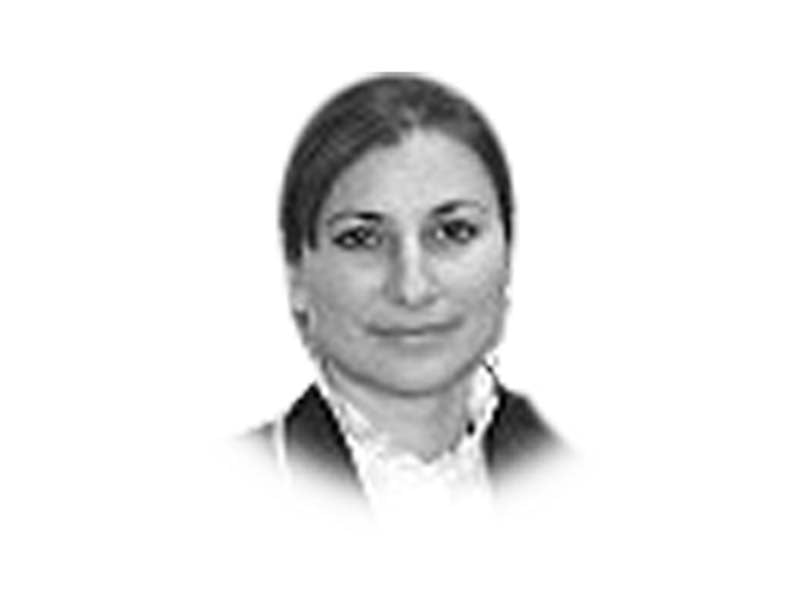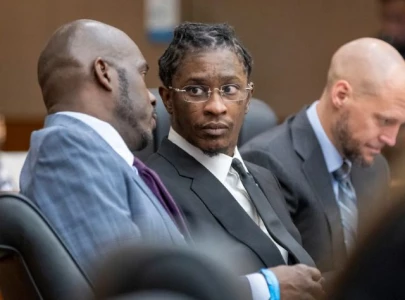
One of the largest gatherings of Muslims in North America showed how wrong those in the media were, who stereotyped an entire global community, simply because they belonged to a particular faith. We arrived in Chicago to attend a series of events organised by Islamic Society of North America (ISNA) — this was the 52nd annual ISNA convention and it included a range of events and entertainment, including book signings by authors, round table discussions, colourful bazaars, a film festival, an art exhibition, a recitation competition, a children’s programme, fashion show, and even a matrimonial banquet! The variety of events reflected how ‘normal’ Muslims are — like any other community, they simply want to survive and live in peace.
One of the films launched at the film festival of ISNA was an important and remarkable project called Journey into Europe. I had flown in a day before from Islamabad for the launch of this film in which I had taken part. Unlike the popular sensationalist coverage of Islam and Muslims, this project aimed at healing rather than fracturing inter-communal and inter-religious relations. Drawing out an array of voices from various faith and cultural communities of Europe — the mother continent of America — it allowed viewers to begin to understand the complexity of the conundrums faced by so many immigrants and local people living side by side in the 21st century against a backdrop of growing communal unease, media sensationalism, marginalisation and violence.
The film brings out the voices of women and men of Jewish, Christian, Muslim and Hindu faiths, from across Europe — Germany, Spain, the UK, Bosnia, France, Greece and Denmark. Top policymakers and religious leaders (presidents and prime ministers, bishops and the Archbishop of Canterbury, grand muftis and rabbis, along with distinguished academics and intellectuals) were interviewed for the film. We hear for ourselves what the challenges are and the ways in which we can live together. There are problems but there are also solutions. This film tries to instill hope, and better still, a deeper understanding of the complex situation. Islam is often targeted in the popular media for a lack of women’s equal voices — here women’s voices are varied, strong and powerfully presented. In a scene in Granada, against the backdrop of the Alhambra Palace in Spain, we see an array of Muslim women who are from the UK (Cambridge), South Africa, America, Spain and so forth — all challenging popular stereotypes of what it is to look and be ‘Muslim’.
A lady in the audience expressed how amazed she was at the range of voices and opinions that were so successfully brought out in the film. She asked how so many important leaders were interviewed in one project and also how long it took to make the film. The film’s producer, Professor Akbar S Ahmed, answered that it took him 50 years of (effortful) work to build up to this project. It was not an easy task because it involved fund-raising, which would allow extended field research over several years and which would include six members of the team.
The project interviewed asylum seekers landing on the shores of Sicily and Greece. They were arriving in Europe with an economic crisis in the background and rising right-wing movements, which target Muslims. Islamophobia has risen dramatically and with it anti-Semitism, which is an old problem that was never really eliminated in Europe. We today see ‘doner’ killings of young Turkish immigrants in Germany, targeted simply because they were not of white German origin, the rise of the Golden Dawn in Greece, Britain First in the UK, whose members are ex-army officials out to ‘clean’ Europe of immigrants, especially Muslims and Jews. There are two dangerous trends. Alongside conventional reporting of Islam giving the impression that Muslims are not to be trusted, want to take over, and are not one of us, is the rise of extremist groups within the Muslim community not wanting to accept, include and integrate, but rather to reject and exclude. The voices of the right wing are also brought out in the film. In all this growing tension and religious stereotyping, the ordinary person is left to shoulder the burden of the media image imposed on him/her.
I cannot express my sense of excitement and pride at seeing the film we had worked so hard for, finally on the screen with a highly appreciative audience. As one lady physician and development governor pointed out in the audience, this film was and should be used as a tool for dialogue to teach better understanding. Alex Salmond, the top Scottish leader, said in the film that this film is “the tartan of Islam” today — it explains how societies are interwoven and how we must learn to respect each other in order to live in peace. Therefore, not only Muslim extremists, and haters of any of the faiths, including Islam, but everyone must see this film in order to better understand why we need to stop hating and to live in peace with ‘the other’.
Published in The Express Tribune, September 10th, 2015.
Like Opinion & Editorial on Facebook, follow @ETOpEd on Twitter to receive all updates on all our daily pieces.



1716998435-0/Ryan-Reynolds-Hugh-Jackman-(3)1716998435-0-165x106.webp)



1729685382-0/Untitled-design-(57)1729685382-0-270x192.webp)


1730706072-0/Copy-of-Untitled-(2)1730706072-0-270x192.webp)
COMMENTS (5)
Comments are moderated and generally will be posted if they are on-topic and not abusive.
For more information, please see our Comments FAQ